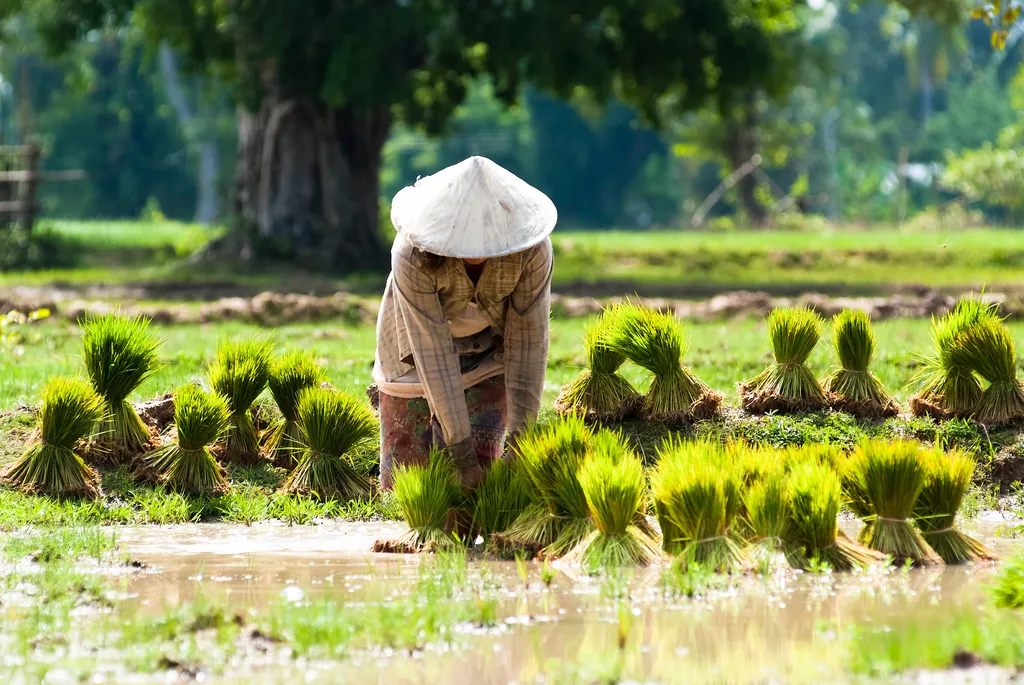In the heart of Thailand’s tropical landscapes, a quiet revolution is taking root, one that could reshape the way we think about agriculture, biodiversity, and even the energy sector. A recent study published in the *Journal of Sustainable Agriculture and Environment* (translated from Thai as *Journal of Sustainable Agriculture and Environment*) has revealed that eco-friendly farming practices in tropical regions can significantly boost wild plant diversity, a finding that holds promising implications for farmers, researchers, and even energy sector stakeholders.
The study, led by Piriya Hassa from the Department of Plant Science at Mahidol University in Bangkok, compared 13 eco-friendly guava farms with 13 conventional ones in central Thailand. The results were striking: eco-friendly farms harbored an average of 11.77 wild plant taxa, compared to just 7.25 on conventional farms. “This difference is not just about numbers,” Hassa explains. “It’s about creating a richer, more resilient ecosystem that can support a wider range of pollinators and natural pest controllers.”
The implications for the energy sector might not be immediately obvious, but they are profound. As the world shifts towards more sustainable energy solutions, the role of biodiversity in supporting these transitions becomes increasingly important. For instance, agroforestry systems—where trees are integrated with crops—can sequester carbon, mitigating the impacts of climate change. Moreover, diverse plant ecosystems can support a wider range of pollinators, which are crucial for many crops, including those used in bioenergy production.
The study also found that plant diversity was highest during the rainy season, although floral richness and abundance remained consistent throughout the year. This seasonal variation is a critical insight for farmers looking to optimize their crop yields and biodiversity management strategies. “Understanding these patterns can help farmers make more informed decisions about when and how to manage their land to support both their livelihoods and the environment,” Hassa notes.
The research underscores the importance of crop diversification, a practice already common among tropical smallholders. Even conventional farms in the study had a diverse range of crops, blending cash and subsistence crops. This diversity is not just good for the environment; it can also provide economic benefits. By reducing reliance on a single crop, farmers can mitigate risks associated with market fluctuations and climate change impacts.
The findings also highlight the role of herbicides in reducing wild plant diversity. Eco-friendly farms, which avoid these chemicals, provide a more hospitable environment for a wide range of plant species. This, in turn, can support a richer ecosystem, benefiting not just the plants but also the pollinators and natural enemies of crop pests. “The absence of herbicides is a game-changer,” Hassa says. “It allows for a more natural, balanced ecosystem that can support a wider range of species.”
As the world grapples with the challenges of climate change and the need for sustainable energy solutions, studies like this one offer valuable insights. They remind us that the future of agriculture is not just about yields and profits but also about biodiversity, resilience, and sustainability. For the energy sector, this research underscores the importance of integrating ecological principles into energy production and management strategies. By doing so, we can create a more sustainable future for all.
In the end, the study by Hassa and his team is a call to action for farmers, policymakers, and energy sector stakeholders. It challenges us to think beyond conventional practices and embrace a more holistic, eco-friendly approach to agriculture. As the world continues to evolve, so too must our practices, ensuring that we leave a healthier, more resilient planet for future generations.

